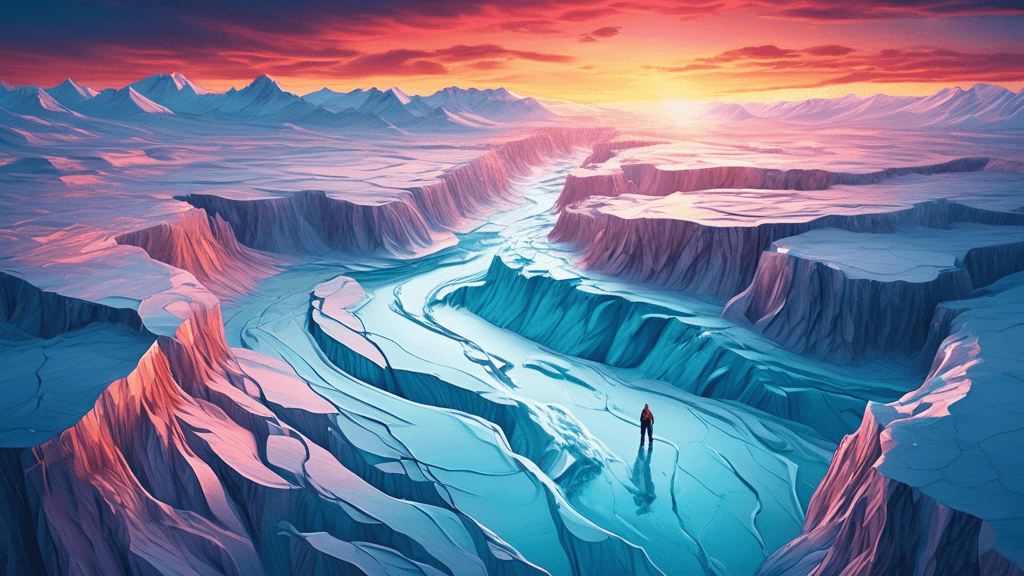
Capturing Eternity: Exploring Glacial Landscapes Through the Lens
Share
The Beauty and Importance of Glacial Landscapes
Glaciers, magnificent and majestic, are not just frozen relics of water; they are dynamic and significant geological features that shape our earth. The allure of these icy behemoths draws photographers and environmental enthusiasts alike, who seek to capture their ethereal beauty and understand their environmental implications. But what makes glacial landscapes so captivating, and why is it important to document them?
Understanding Glacial Dynamics
Glaciers are massive sheets of perennial ice and snow that move under their own weight. They are formed when the accumulation of snow exceeds its ablation (melting and sublimation) over many years, often centuries. Glaciers are not static; they sculpt the landscape around them, carving out valleys and shaping mountains as they advance or retreat.
The Role of Glaciers in Climate Change
Glaciers are also critical indicators of climate change. As the climate warolds, the rate of glacier retreat has accelerated, providing clear evidence of the changing temperature patterns. Data gathered from the study of glaciers is thus essential in driving policy and behavioral change needed to combat climate change. Some pivotal points include:
- Glaciers lose an estimated 150 billion tons of ice annually, contributing to rising sea levels.
- The disappearance of glaciers could threaten the water supply for millions of people worldwide.
- The morphological changes in glacial landscapes can lead to other natural calamities like avalanches and floods.
Photographing Glacial Landscapes
Photography plays a crucial role in environmental conservation, offering a powerful medium to illustrate the stark changes happening in our world. Capturing glacial landscapes through the lens is not just about preserving a visual record; it's a poignant form of environmental activism.
Tips for Capturing the Ethereal Beauty of Glaciers
To effectively photograph glacial landscapes, consider the following tips:
- Understand the Light: Glacial regions can present challenging light conditions. Polarizing filters can help manage reflections and enhance the natural blues of the ice.
- Focus on Composition: Glaciers offer dynamic textures and formations. Use elements like crevasses, seracs, or moraines to create compelling foregrounds that lead the eye into the image.
- Emphasize Scale: Include a human element or familiar objects to help convey the immense scale of the glaciers.
Notable landscape photographer Ansel Adams once said, A good photograph is knowing where to stand. This is especially true in glacial photography, where positioning can dramatically alter the portrayal of the ice's character and form.
The Environmental Impact of Glacial Photography
While the goal of photographing glaciers is often to showcase their beauty and highlight environmental issues, it's crucial to consider the impact of our actions. Responsible photography practices should be at the forefront of any environmental photographer's mind. This includes:
- Maintaining a safe distance from glacier edges and unstable ice, which are hazardous and can disrupt the natural environment.
- Adhering to local regulations and guidelines when photographing sensitive ecosystems.
- Using images to educate and advocate for the preservation of our rapidly changing landscapes.
Conservation Through the Lens
The camera is an instrument that teaches people how to see without a camera, observed Dorothea Lange, another renowned photographer. In the context of glacial landscapes, this means using photography not just to document but also to engage and mobilize public opinion regarding climate change and environmental conservation.
Conclusion
Exploring glacial landscapes through photography is more than capturing stunning scenery; it's about engaging with the environment and contributing to its preservation. Each image serves as a record of history, a piece of evidence in the larger narrative of climate change, and a call to action. By understanding and communicating the importance of these landscapes, photographers play a crucial role in conservation efforts.
Are you ready to make a difference with your camera? Consider how you can contribute to environmental conservation through your photography, whether by raising awareness, driving change, or both. Your lens can be a powerful tool for change. What will you capture next?





